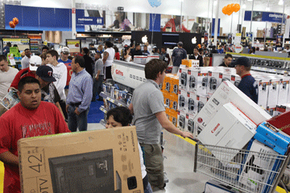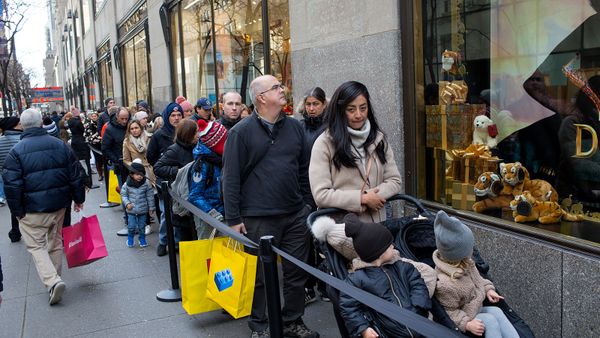There's nothing terribly mysterious about the doorbuster deal. It's basically a catchier way of saying "loss leader," retail jargon for a product priced below cost to attract customers to the store, because there's a good chance that, once inside, they'll spend more on additional products -- or on something else entirely.
This is a legal marketing ploy, but it treads rather close to the illegal "bait-and-switch." In a typical version of that scheme, retailers advertise an amazing deal on, say, a 57-inch LCD. When customers arrive at the store, those advertised TVs are nowhere to be found -- so hey, says the salesperson, why not look at this much better (and more costly) TV, as long as you made the drive?
It can sometimes be a fine line between the doorbuster and the bait-and-switch. The doorbuster TVs are at least present in the store, or they were -- those particular models may be in such limited quantities as to make them unavailable to all but the first handful of people in the store. And the rest, well, as long as they made the drive ...
Or maybe the doorbuster TV is still available. Yay! The next thing you know, there's a salesperson whispering about low quality electronics and poor warranty and bad picture -- but that (more expensive) one over there has none of those pitfalls, and is actually a better deal when you factor in the higher quality and better warranty, and what's an extra $500 to avoid all that trouble down the line?
Many retailers are counting on the excitement of Black Friday and the promise of the doorbuster to short circuit the usual care people take when making large purchases. Deeply discounted products may have hidden imperfections, or have been poorly refurbished, or in fact be cheaply made, no-name products sold under brand names that were bought and paid for. Philips and JVC, for example, sell the rights to their brand names, meaning little-known companies can pay to put "Philips" or "JVC" on their own TVs [source: Morrison].
Sometimes, that doorbuster deal isn't even the best deal out there, but it's a "doorbuster," the "lowest price of the season," so why look around?
Not all doorbusters are so sketchy, of course. Sometimes, the first few people in the store really do get a great TV for a really great price. However, in recent years, the price for that savings seems to have skyrocketed: A doorbuster crowd outside a New York Wal-Mart in 2008 actually busted down the doors and trampled an employee to death as they ran inside for those limited-quantity deals [source: Fleming]. In 2011, a woman in an L.A. Wal-Mart was arrested for pepper-spraying her shopping competition [source: Njus]. Gunfire and fighting have also been reported in crowds waiting to commence the race for the deal [source: Njus].
Of course, these outbreaks of violence are few and far between (and they say more about the dark side of human nature than of the doorbuster). Still, is the promise of the doorbuster worth the teeny-tiny risk of injury and the bigger risk of fleecing, disappointment or ultimately spending twice what you'd intended and can afford?
For many, the answer is probably a big, loud "Yes." It's a 57-inch LCD for $500. If that means borrowing some SWAT gear, camping out for a day, and possibly leaving the store either in tears or in debt, so be it. Doorbuster deals don't come along every day.
And if they do, they're called something much less catchy.


